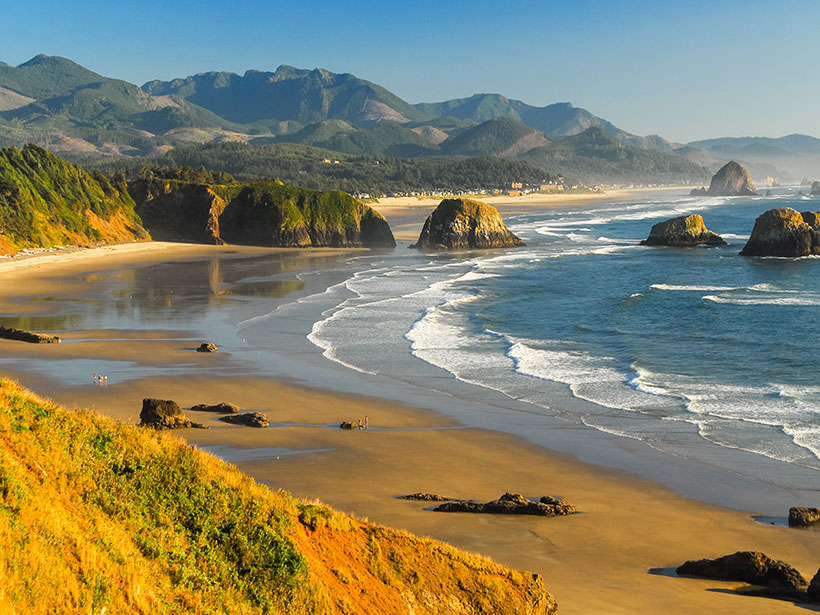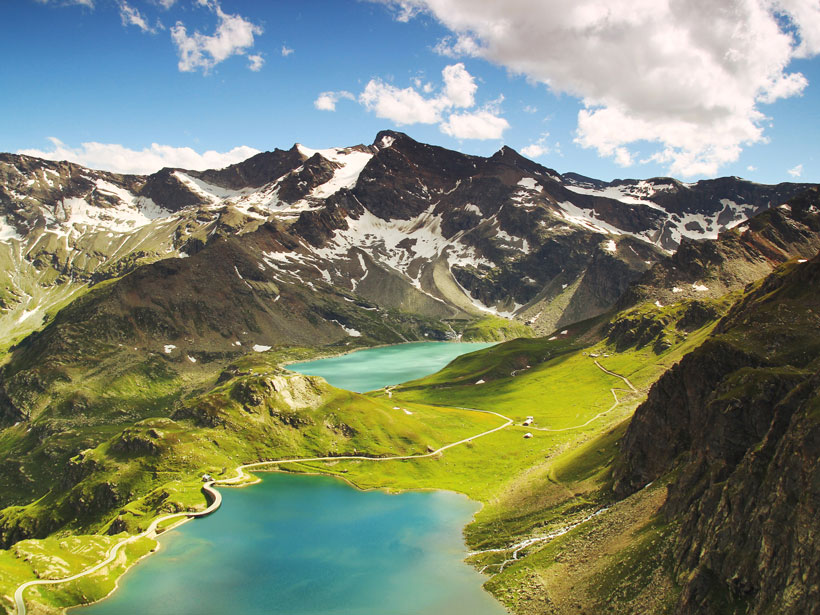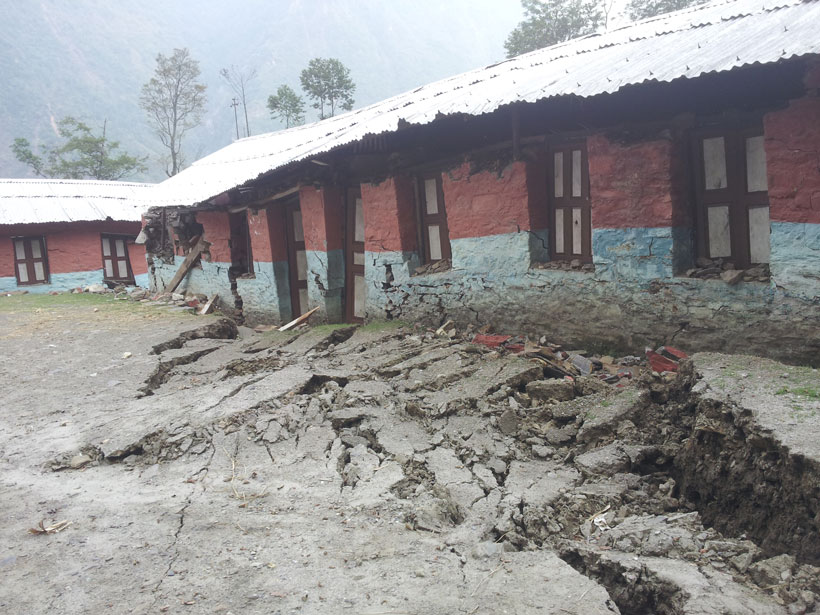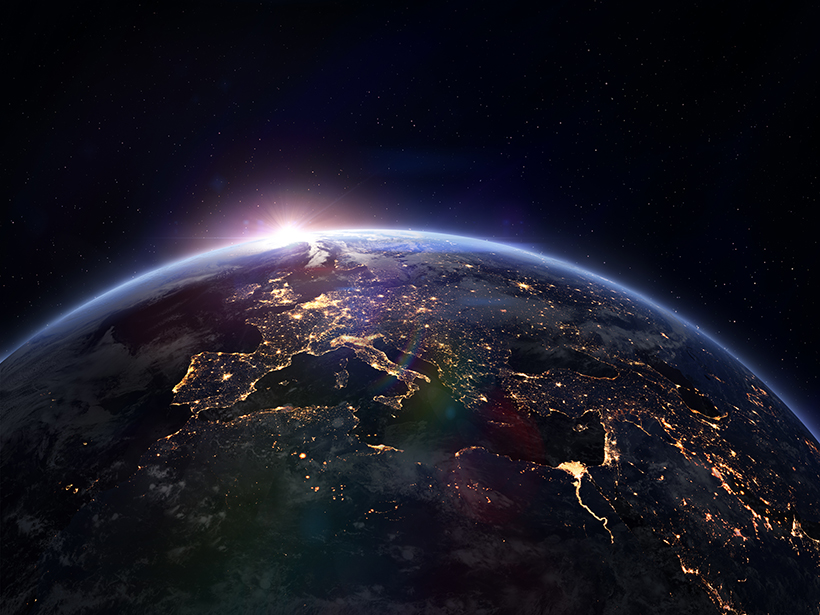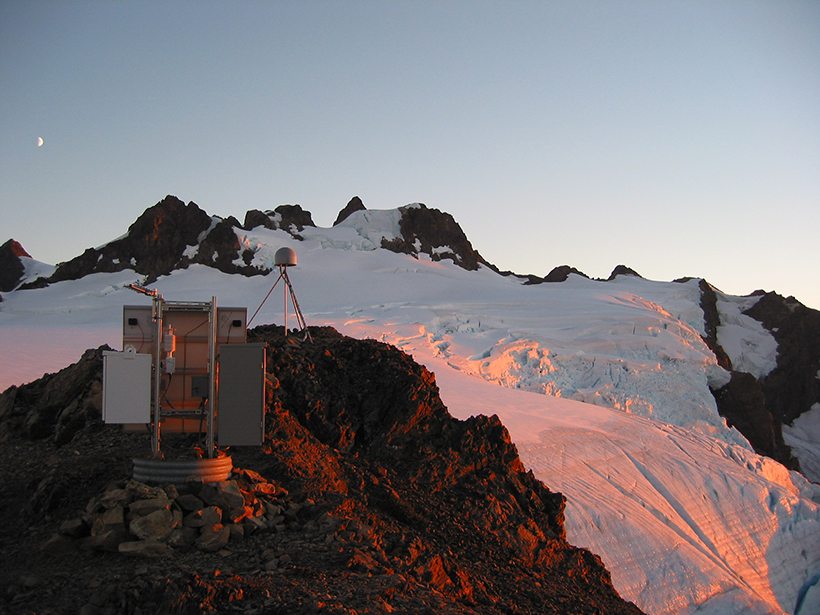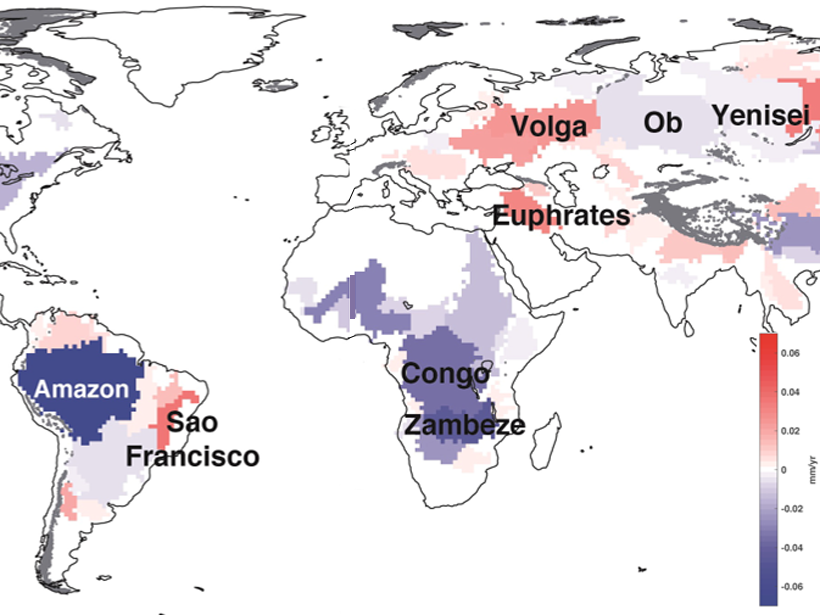Comparing recent GPS data with a longer record of sea level along the western coast of North America allows researchers to home in on interseismic deformation above the Cascadia megathrust.
geodesy
The First Global Geologic Map of the Moon
At a time when more geological data about the Moon are available than ever before, USGS scientists have created a one-stop shop where everyone, including the public, can see how it all fits together.
A Graceful Way to Study Daily Water Storage on Land
A new analysis technique could help scientists improve the temporal resolution of satellite gravity data and see trends in terrestrial water storage and movement in near real time.
Space-Based Data Expand Understanding of Crustal Deformation
Researchers used the largest GPS data set yet to examine deformation of the crust across continental China and its implications for tectonic activity.
Geodetic Data Pinpoint Earthquake-Prone Regions of the Himalayas
GPS measurements of the Indian and Eurasian plates reveal four locked segments most likely to produce large earthquakes.
Slow Slip By Any Other Name
Earth’s faults slip most catastrophically as earthquakes. The rise of geodesy reveals an array of slower slip events, meaning faults are nearly always active. Are these behaviors really so different?
The Shape of the World
From new techniques in geodesy to the scientific culture we want to create, let’s start our next century together by assessing how we measure what’s most important.
Seismic Sensors in Orbit
Navigation satellites are enabling high-precision, real-time tracking of ground displacements, supplementing traditional methods for monitoring and assessing earthquakes.
A Closure on Sea Level Rise Budget
Terrestrial water loss may explain the lack of previous budget closure in global mean sea level rise.
Einstein Says: It’s 309.7-Meter O’Clock
Atomic clocks are now so accurate that Earth’s gravity can be seen to slow them down. Geodesy is preparing to use this relativistic effect to measure elevation.

